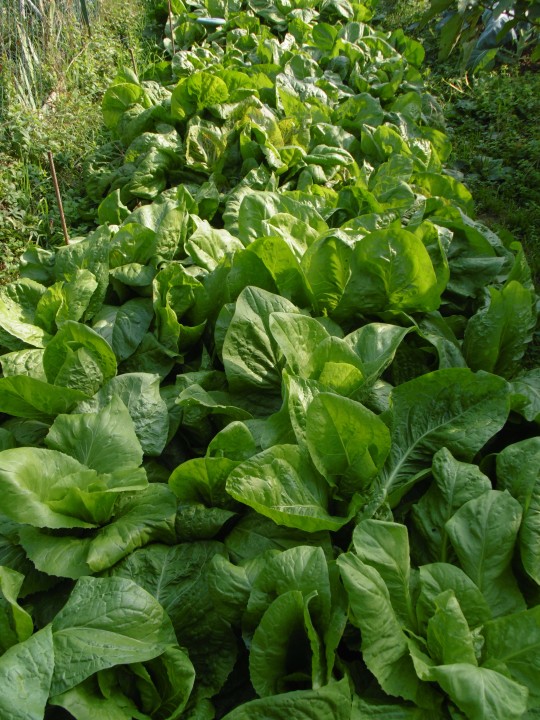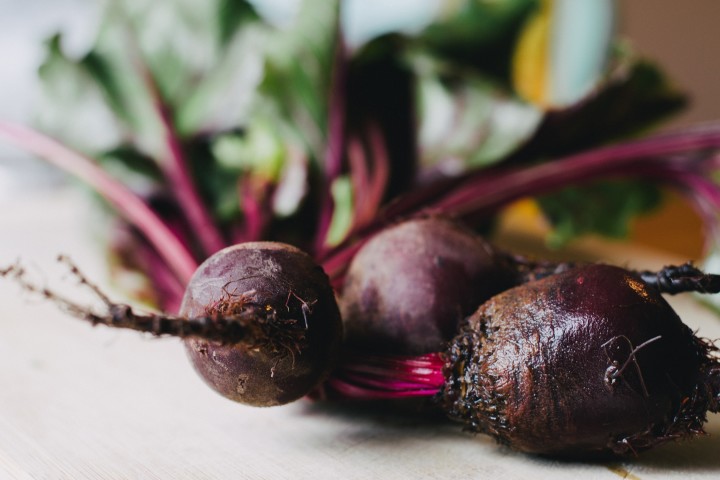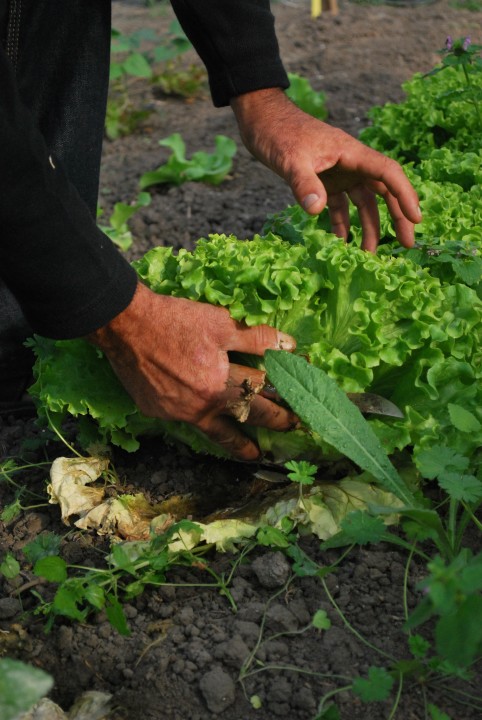Best Vegetables That Grow in the Shade
Shade vegetables are vegetables that do well in shade and require only a few hours of sunlight. There are many different types of vegetables that thrive in the shade, including lettuce, radishes, kale, spinach, and Swiss chard.
If you’re looking for something more substantial than salads and greens, look for root vegetables like beets, turnips and rutabagas which all do well in partial shade. Other vegetables that do well in partial shade include peas, green beans, cabbage, and broccoli.
Herb gardens are also great for shaded areas — oregano, parsley, chives and cilantro all grow well with little sun exposure and can add flavor to your recipes. Herbs can even be grown indoors if you don’t have any outdoor space.

Shade Vegetables You Should Try in Your Garden
Here are some shade vegetables you may want to try in your garden. Most all of these vegetables require around 3 to 4 hours of sunlight per day. During summer time, keep in mind that shade vegetables benefit from morning sun and should be protected during the hottest afternoons.
- Arugula
- Asian Greens
- Chard
- Culinary Herbs
- Kale
- Lettuce
- Mesclun
- Mustard Greens
- Peas and Beans
- Beets
- Carrots
- Radishes
- Turnips
- Potatoes
- Scallion
- Spinach
However, this list is a very general one and it should be noted that there are plenty of other vegetables that do well in shade. Do a bit of research to see which ones might work best in your garden.
Also, depending on how much shade your garden has, you may need to adjust your planting times and the type of vegetables you grow.

How Much Shade Does Your Garden Have?
A typical garden needs around 8 to 10 hours of full sun, but many gardeners don’t have that kind of sunlight. So, before you decide on what types of vegetables to grow in your garden, assess how much sunlight it gets.
There are three kinds of shade of which you should be familiar. There is dappled shade, which could be cast upon your vegetable garden from a tree canopy.
With a little strategic trimming, you can enhance the amount of sunlight that reaches your garden, which can be especially helpful during the summer months.
Another type of shade is deep shade, which is usually caused by buildings or walls that block out most sunlight. This kind of shade is more difficult to work with but there are still plenty of vegetables that do well in low-light conditions.
There is also partial shade. Partial shade can vary quite a bit from a few hours of sunlight to complete shade. Partial shade is a bit more difficult to deal with than dappled shade, but, of course, not as difficult as deep shade.
To grow shade vegetables successfully, you will need to be patient and willing to experiment. Your backyard is a microclimate, and it is important that you pay close attention to what goes on during the day in terms of sunlight falling on your garden areas.
Conduct some trials by planting different types of vegetables to see what will grow the best in a particular area before you invest in a lot of plants. Better to lose a few plants than several dozen.
Deep Shade
We can start with the most difficult shade conditions: deep shade. While you cannot remove heavy shade, you can still grow vegetables in this type of garden.
Vegetables that do well in deep shade include potatoes, garlic, and onions. Other vegetables such as parsley, spinach, beets and chard also do well in deep shade.
In addition to these vegetables, herbs like oregano, rosemary and thyme can thrive in partial or full shade. Adding herbs to your garden is an easy way to get flavor from plants that don’t need full sun.
Partial Shade
Partial shade is a bit easier to work with, and you can grow a variety of vegetables in this type of garden. Leafy greens such as kale, arugula, and chard all do well in partial shade.
Also broccoli and cauliflower are great options for your partial shade garden. Peas, beans, beets, leeks, radishes — these root vegetables will all do well in partial shade.
Dappled Shade
Finally, if you have a garden with dappled shade due to a tree canopy, there are plenty of vegetables that can thrive in this environment. Leafy greens such as lettuce, spinach, and kale will develop nicely.
Root vegetables such as radishes, carrots, potatoes, and turnips will also do well in dappled shade. Tomatoes can be grown in this type of environment but should not be exposed to direct sunlight as it can create problems such as sunburns or blossom-end rot.
However, be aware that vegetables grown in shade typically take longer to mature than those grown in full sun. Also, the yields are usually lower as these plants do not have access to as much sunlight and water.
Shade Vegetables Success Tips & Resources
To have the most success with growing shade vegetables, it is important to make sure your soil is well prepared. Shade gardens may need more mulch or soil amendments as there is usually less sun to help with water retention and nutrient absorption.
It is also important to ensure your plants get enough water — they can suffer in the heat if not watered frequently. It’s a good idea to use drip irrigation or soaker hoses if you can’t water your plants every day.
Finally, it is best to research the vegetables you want to grow in your shaded garden and determine how much sunlight they need.
Many seed companies now label their seeds as “shade tolerant” so that you know exactly what will do best in your garden. There are also plenty of online resources available to help you figure out the right vegetables for your shaded garden.
But, if you don’t want to deal with the shade and would like to have more sun in your garden, here are some tips on how to increase sunlight in your garden:
- Trim low-hanging tree branches to let light into your vegetable garden.
- Used raised beds and liners to keep tree roots from robbing your plants of water.
- Use reflective mulches in your garden to help plants get more sunlight.
If you cannot do any of these things, you can still have a successful shaded garden by selecting vegetables that do well in these conditions and properly preparing your soil.

Frequently Asked Questions
In order to help you get the most out of a shaded garden, here are some frequently asked questions that you may already have in your head, yet don’t know how to answer.
Q: Do any vegetables grow in part shade?
A: Yes! There are many vegetables that can tolerate some shade. These include leafy greens, broccoli, cauliflower, peas, beans, beets, and leeks. They thrive in partial shade, but may need additional watering and soil amendments.
Q: How to grow vegetables in full shade?
A: Full share, or deep shade, is difficult to work with, but there are some vegetables that can tolerate this kind of environment. These include potatoes, garlic, onions, parsley, spinach, and beets. Additionally, herbs like oregano, rosemary and thyme can thrive in full shade.
Growing vegetables in full share can be tricky. Make sure to pay close attention to the amount of sunlight that is available and use reflective mulches or raised beds to help your plants get more sun.
Additionally, it may be necessary to water more frequently if there is not enough natural light for your plants. Water can help your plants survive the shade!
Q: Can cucumbers grow in shade?
A: Cucumbers are not a great choice for shaded gardens as they need full sun to fruit and ripen.
If you absolutely must grow cucumbers in shade, it is best to use varieties such as ‘Bush Pickle’ or ‘Bush Crop’. Plus, set up reflective mulches or raised beds to help plants get more sunlight.
Q: What perennial shade plants will grow well under pine trees?
A: Shade plants that can tolerate acidic soil and some drought are best for growing under pine trees. These include hosta, heuchera, astilbe, ferns, hellebores, lily of the valley, and bloodroot.
These plants may need supplemental water or additional mulch to help them survive in a more acidic environment.
This article about shade plants will help you find more ideas for what to grow in your garden that guarantee successful results!